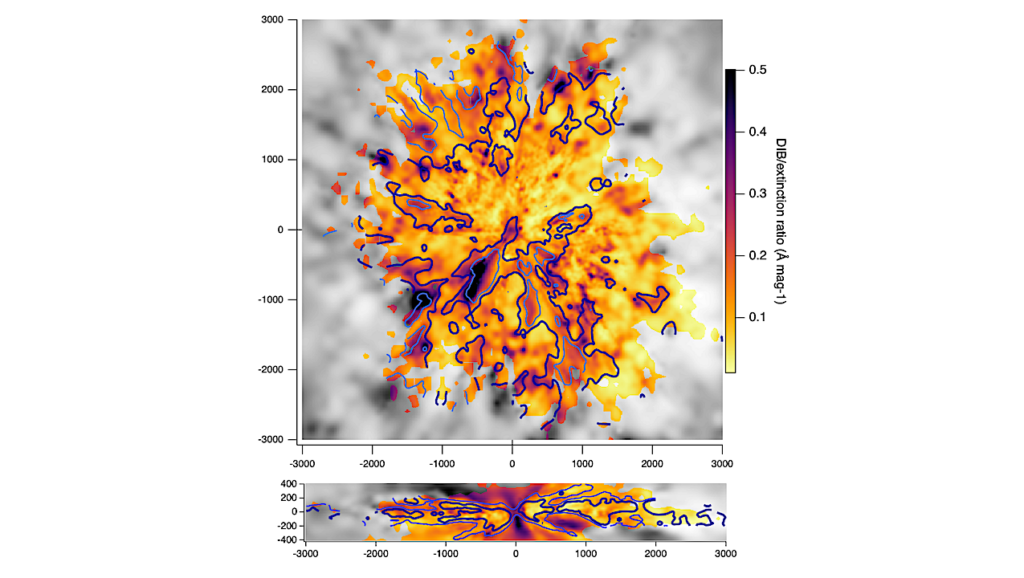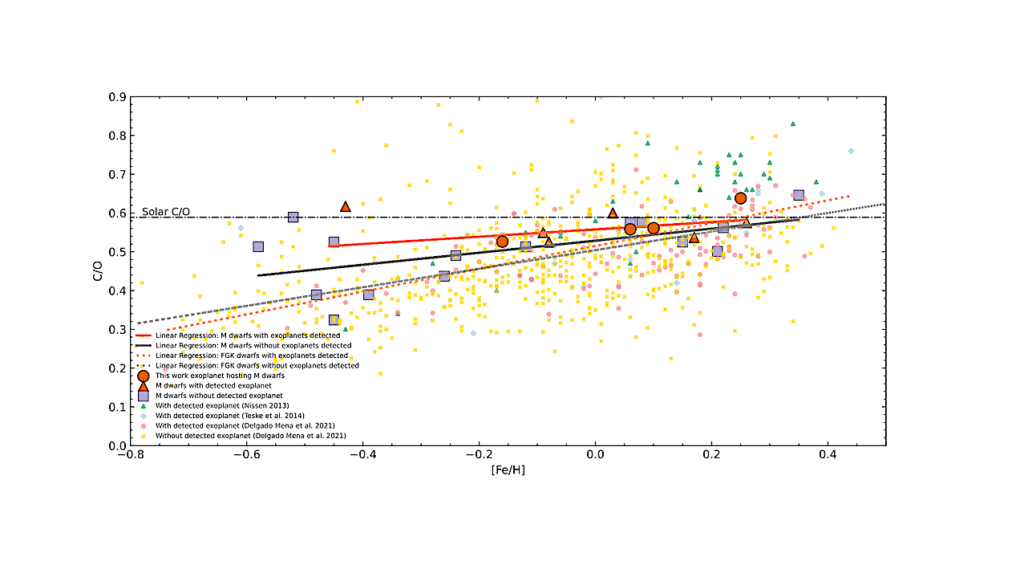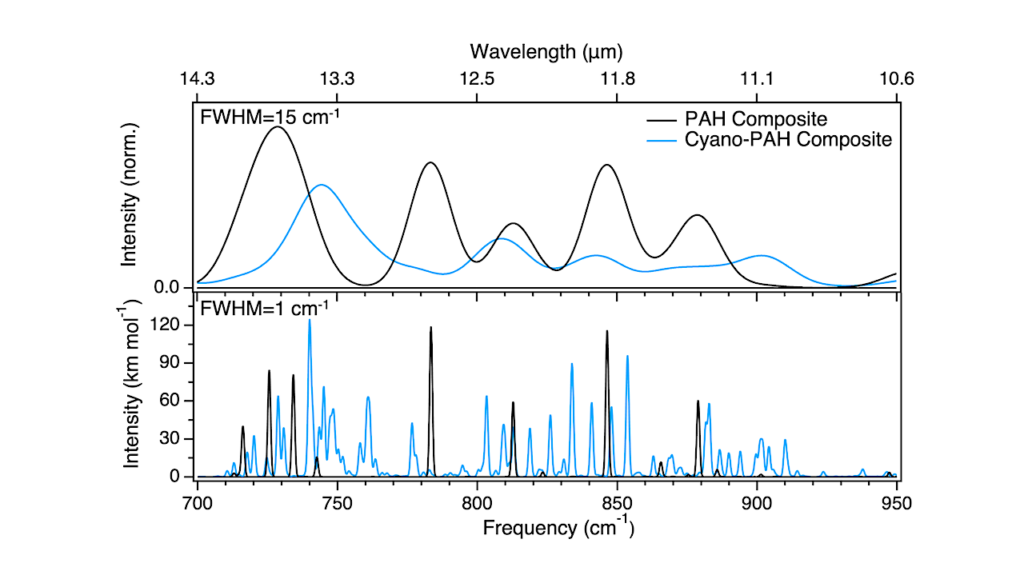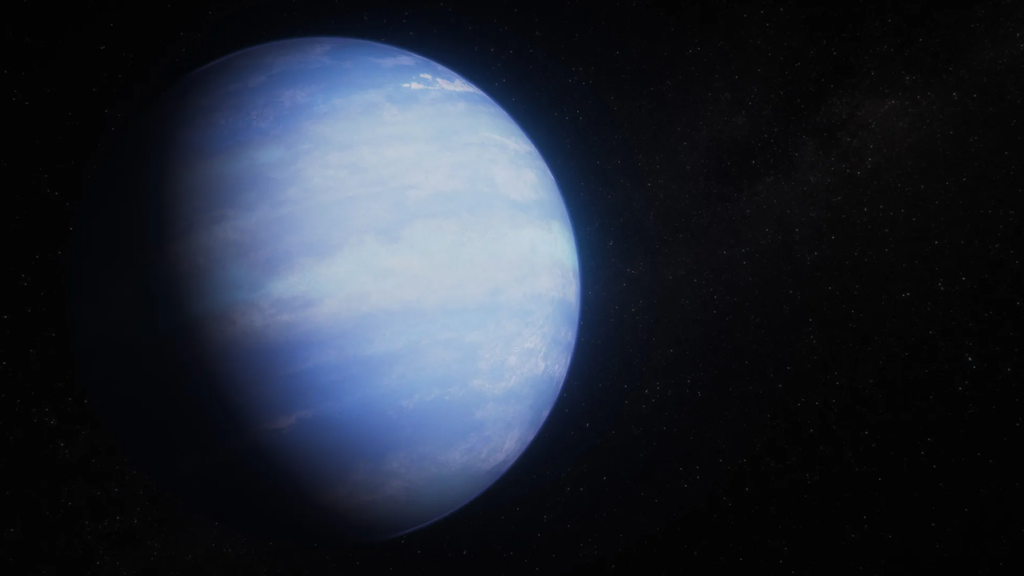Observation Of Complex Organic Molecules Containing Peptide-like Bonds Towards Hot Core G358.93−0.03 MM1

In the star formation regions, the complex organic molecules that contain peptide bonds (−NH−C(=O)−) play a major role in the metabolic process because −NH−C(=O)− is connected to amino acids (R-CHNH2−COOH).
Over the past few decades, many complex organic molecules containing peptide-like bonds have been detected in hot molecular cores, hot corinos, and cold molecular clouds, however, their prebiotic chemistry is poorly understood.
We present the first detection of the rotational emission lines of formamide (NH2CHO) and isocyanic acid (HNCO), which contain peptide-like bonds towards the chemically rich hot molecular core G358.93−0.03 MM1, using high-resolution and high-sensitivity Atacama Large Millimeter/submillimeter Array (ALMA) bands 6 and 7.
We estimate that the column densities of NH2CHO and HNCO towards G358.93−0.03 MM1 are (2.80±0.29)×1015 cm−2 and (1.80±0.42)×1016 cm−2 with excitation temperatures of 165±21 K and 170±32 K, respectively. The fractional abundances of NH2CHO and HNCO towards G358.93−0.03 MM1 are (9.03±1.44)×10−10 and (5.80±2.09)×10−9.
We compare the estimated abundances of NH2CHO and HNCO with the existing three-phase warm-up chemical model abundance values and notice that the observed and modelled abundances are very close.
We conclude that NH2CHO is produced by the reaction of NH2 and H2CO in the gas phase towards G358.93−0.03 MM1. Likewise, HNCO is produced on the surface of grains by the reaction of NH and CO towards G358.93−0.03 MM1. We also found that NH2CHO and HNCO are chemically linked towards G358.93−0.03 MM1.

Emission maps of detected non-blended transitions of NH2CHO and HNCO towards the MM1. The contours are the 988 µm continuum emission map of G358.93–0.03. The contour levels start at 3σ. are non-blended. The non-blended emission lines of HNCO exhibited ≥4.5 σ statistical significance. The resultant LTE-fitted spectral line and spectra line parameters of HNCO are shown in Figure 2 and Table 1. The best-fit column density of HNCO is (1.80±0.42)×1016 cm−2 with an excitation temperature of 170±32 K, which was estimated based on LTE modelling. The abundance of HNCO with respect to molecular H2 towards the MM1 is (5.80±2.09)×10−9 , where the column density of molecular H2 towards the MM1 is (3.10±0.2)×1024 cm−2 (Manna et al. 2023). — astro-ph.GA

Emission lines of NH2CHO and HNCO towards the MM1. The green lines represent the observed
molecular spectra of MM1. The fitted blue spectra indicate the LTE-modelled spectra of NH2CHO and
HNCO. The fitted black spectra indicate the LTE-modelled spectra of other nearby molecules to understand
the blended effect. The velocity of the spectra is –16.50 km s−1 — astro-ph.GA
Arijit Manna, Sabyasachi Pal
Comments: Accepted for publication in Research in Astronomy and Astrophysics
Subjects: Astrophysics of Galaxies (astro-ph.GA)
Cite as: arXiv:2406.00428 [astro-ph.GA] (or arXiv:2406.00428v1 [astro-ph.GA] for this version)
Submission history
From: Arijit Manna
[v1] Sat, 1 Jun 2024 12:50:46 UTC (1,949 KB)
https://arxiv.org/abs/2406.00428
Astrobiology, Astrochemistry, biochemistry,








